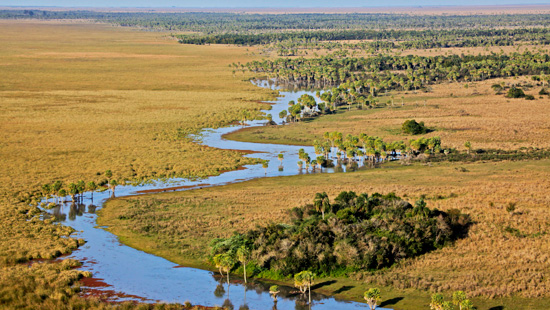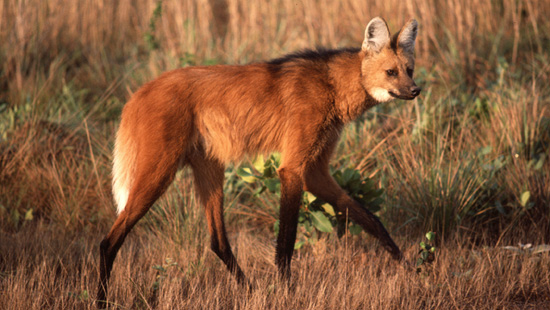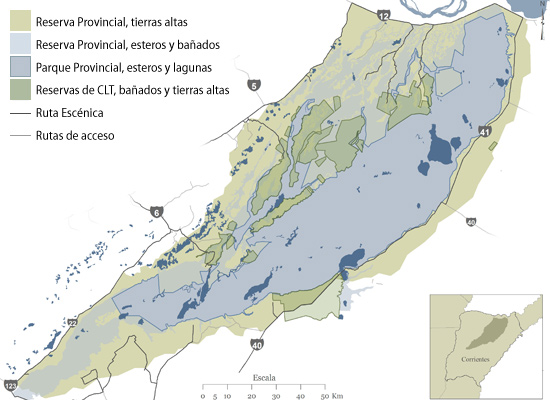What is the Great Iberá Park?
The Great Iberá Park is a vision that CLT has directed towards creating an area that conserves the prepetuity of the natural ecosystems of Iberá, maintaining maximum diversity and ecological integrity while serving as a great area for regional development via ecotourism.
Currently, of the 1,300,000 hectacres that make up the basin and the Iberá Natural Reserve, 40% (553,000 hectacres) are made up of fiscal lands that have been declared a Provincial Park or area of strict conservation. These lands are almost exclusively flooded areas. In order to secure the ecological integrity of the Iberá basin and provide a high quality ecotourism location, it is crucial that the park also include other ecosystems besides the flooded lands. Just as important, if we want species of mammals that are extinct in the region to return to Iberá, we need the ecosystems that they inhabit to be appropriately protected.

Natural ecosystem in the Great Iberá Park
To achieve this, CLT has acquired 150,000 hectacres of old cattle ranches that border the fiscal lands which include habitats that are not present within the actual Iberá Park - such as espinal, malezal grasslands, and forests – with the goal of including these lands within the area of strict conservation, creating 700,000 hectacres of what we propose to call the Great Iberá Park. This park could be the largest national park in Argentina once it is transfered to the nation, and without a doubt will be one of the most important wetlands/grasslands areas in South America.
Within its limits, this great park will house the largest poplulation of threatened strange-tailed tyrants in the world and the second largest population of marsh deer in the world. It will serve as a refuge for fundamental threatened species such as the maned wolf, the pampas deer, grassland birds that are virtually extinct in argentina due to agricultural activites, caymans, the river otter, and many more. Additionally, due to its size and high quality habitat, this area of conservation represents a unique opportunity to attempt the reintroduction of locally extinct fauna such as the giant anteater, the tapir, the collared peccary, the pampas deer, the ocelote, the giant otter, and the jaguar.

The maned wolf, a threatend species that finds refuge in Iberá
A national or provincial park of these characteristics, with all key species well preserved, is a fountain of wealth for the local communities located on its periphery. Ten municipalities can directly benefit from a world class eco-tourist development. The economic success of Carlos Pellegrini is a clear example fo how well administered natural resources can improve the quality of life for the entire population. The Great Iberá Park would continue to be surrounded by 600,000 hectacres of private lands included currently in the Iberá Natural Reserve, which could dedicate themselves to various types of sustainable production while benefitting from the attractive and conserved tourist area.

Map of the Great Iberá Park